
New Life for an Old Warrior

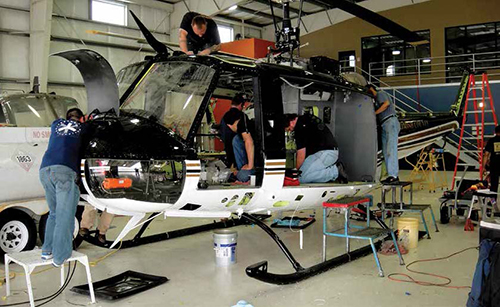
Located in Washington state’s capital city of Olympia is a small helicopter maintenance organization that has carved a niche by bringing old Bell Helicopter airframes back to life for their next chapter in the book of aviation. Everyone in the business of flying and working on helicopters is aware of the most iconic and famous helicopter, the Bell Huey (officially known as the UH-1 Iroquois), which was built in the 1960s and early 1970s for U.S. Army use in the Vietnam War. Northwest Helicopters LLC brings this war veteran back to life as it continues to breathe a new future for commercial and military customers around the world. I recently had the opportunity to interview Brian Reynolds, owner and CEO of Northwest Helicopters.
Helicopter Maintenance – Hello, Brian. What made you decide to locate in Olympia?
Reynolds – We chose to locate in Olympia as it’s a great location. We are close to both air and sea ports, and this area is strong on aviation maintenance and manufacturing.
Helicopter Maintenance – How long have you been in business?
Reynolds – We have been in business since the late 1970s. I came on board in 1984 and worked for the company as a pilot. In 1985, I had the opportunity to purchase the company — and I did.
Helicopter Maintenance – How many employees do you have?
Reynolds – We currently have 49 employees. We also use contract employees as needed. This allows us to spool up fast if the need arises.
Helicopter Maintenance – We know that your specialty is working on Bell UH-1 Hueys. What do you do to them?
Reynolds – We specialize in the entire refurbishment of the aircraft. We take old, tired, retired former military helicopters and completely strip them down and give them a new lease on life — everything from sheet metal to wiring, to avionics, gearboxes and engines.
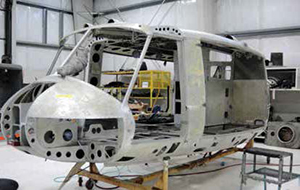

Helicopter Maintenance – Who are the current users of the UH-1H?
Reynolds – That is a long list. There are still about 1,000 or so in use worldwide. There is just no replacement that can still do the job with the cabin size, power, reliability and the cost of the helicopter. In the U.S., you see many of them used as fire fighting machines. They are still a front-line helicopter in many South American countries. We also have a few collectors who just want a Huey for themselves for personal flying. They are just cool to have! If you are a helicopter person, how can you not love a Huey?
Helicopter Maintenance – Tell us about your employee expertise.
Reynolds – Almost all of our veteran guys have over 20 years experience on the UH-1H. Our guys gained a lot of experience in the 1990s when we were the biggest civil operator of the type flying some 5,000-6,000 hours a year. We learned a lot. Now we have these guys training our new young staff. We prefer to get our guys right out of A&P school and train them. This gives us time to see where they excel.
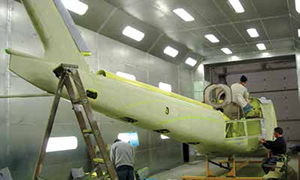

Helicopter Maintenance – Do you make any of your own fixtures?
Reynolds – As a matter of fact, we do. We will make some fixtures as needed. We have our own machine shop and that really makes it happen when we need something. As far as our main fuselage fixtures, they are made by an approved Bell Helicopter contractor.
Helicopter Maintenance – When a customer contacts you about refurbishing their helicopter and you have not as yet seen it, how do you decide the scope of work for the helicopter build up?
Reynolds – We have enough experience from doing so many that we know where all the problem areas are and we are able to use an average repair estimate and parts cost. This has worked well for us in the past. We stock virtually every spare airframe part needed. Then what I do is ask the customer a few simple questions like what do they want to do with the Huey and where do they plan to operate it? Then I will send them a form to fill out on which they mark all the options they want, i.e., paint and interior colors, avionics, etc. After they complete that and they send it back to me, I then convert that into a plan and a quote and send it back for their approval. Once it’s approved, we go to contract and get the project in the queue. And off we go.
Helicopter Maintenance – Do you take into account any scheduled maintenance for the aircraft you are working on?
Reynolds – Yes, we do. We complete all major and minor inspections at the same time. It’s all part of our certification program. We have the helicopter completely taken apart so it makes total sense to do it all. Then the customer starts over with the clock at zero and has many hours of use before maintenance is needed.
Helicopter Maintenance – Tell us how you keep the customer apprised of the work being done on their machine.
Reynolds – This came up early on and since all of our customers are located out of state or in another part of the world, this was a problem. I came up with the idea to put an active customer forum on our web site. This allows us to put updates and pictures, ask questions and communicate all over the world. The system is password protected per customer, so nobody else gets to see other than us and those individuals the customer approves. It allows the customer to see his project in real time. It also allows us to communicate with different time zones. It is a very effective tool for us and the customer. They can check on their helicopter from anywhere they can access the internet.
Helicopter Maintenance – Besides refurbishing the aircraft, will you take on a job of just performing a system or systems upgrades?
Reynolds – Yes, we do both or either. It depends on what the customer wants. We are oriented to give the customer what they want. At the same time I ask them the mission and where they plan to operate and I will make modification suggestions. For example, we had a customer operating in high altitude areas and they needed the upgraded engine. Then I had another customer in the desert and they needed engine barrier filters. That all works out well. I want them to be successful with the Huey. That makes them come back and send their friends.
Helicopter Maintenance – Any special jigs or tools you use or manufacture?
Reynolds – We make several tools to make the work easier. We have some pretty smart guys that make a design and have the machine shop make the tool. It’s impressive. A lot of it is for removing old bearings and parts that have not been off the helicopter since it was built.
Helicopter Maintenance – How do you approach rewiring an aircraft?
Reynolds – The UH-1H is just now getting to the age that we will need to start doing a complete rewiring of the aircraft. We are in the process of planning our new wiring system and how we are going implement it. This will be next year’s major project. We haven’t decided if we are going to buy our own wire machine or use a contractor to build the wire harnesses for us.
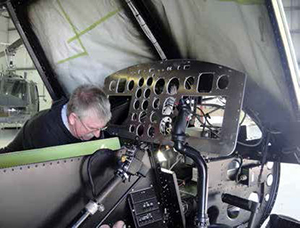
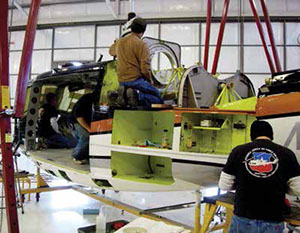
Helicopter Maintenance – Do you vendor out any refurbishment work?
Reynolds – Yes, we do. We outsource our engine overhauls since we don’t have an engine test cell yet. We also send out parts like instruments, oil coolers and switch panels to vendors, just to name a few.
Helicopter Maintenance – What happens to a Huey when it comes in your door, from start to finish?
Reynolds – It starts out with an inventory record made of the helicopter. Then it goes in to complete disassembly where the tail boom and main fuselage are separated. After all the parts and components are removed, they are sent to cleaning to remove all the oils and grease. From there they are sent to paint removal in our blast room where we use walnut shells to remove the paint. After that they are cleaned again and sent back to the main shop for a complete inspection.
After that, both the tail and fuselage are sent to the sheet metal shop where, depending on repairs needed, they are put into the fixtures to have major airframe parts replaced. After this work is completed, the bodies are sent to the paint shop for complete painting on the inside.
After the interior painting is complete, it is sent to the assembly shop to start installing all the overhauled or new components. Keep in mind that during the main processes, all of the components and engine were being overhauled and are back ready for installation. After the helicopter is mostly assembled, it is sent back to the paint shop for final exterior paint. When the paint is completed, it is sent back to the main shop and prepared for initial ground runs.
Ground runs commence and we check for leaks, adjust electrical and pressure systems, balance and track the main and tail rotors, and prepare for flight. The last thing we do prior to flight is a complete weight and balance check. Then we roll it out and commence a three-hour flight test and adjustment program. After that is complete, we hand it over to the customer.
There you have it from start to finish, breathing new life into an old warrior. Northwest Helicopters just might be the Huey’s best friend.
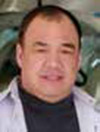 Reynolds has more than 12,000 total flight hours and more than 9,700 hours in helicopters. He is currently qualified as a commercial pilot — rotorcraft helicopter, airplane single engine land and sea, multi engine land, instrument and glider. Reynolds is also a flight instructor for both helicopters and airplanes. He is FAA Part 135 Helicopter Air Carrier current. He is also FAA Part 133 external load current and long-line qualified to 250 feet in the UH-1H. He is UH-1H USFS carded for fire fighting, heli-torch, snow operations, mountain flying and long-line vertical reference. Reynolds holds the following FAA Type Ratings: Piston Planes: Grumman TBM Avenger, North American P-51D Mustang, Chance Vought F4U Corsair, Hawker Sea Fury, Douglas A-1 Skyraider, Grumman F4F Wildcat, Mitsubishi A6M Zero. All makes and models of single and multi engine piston powered high performance aircraft. Those are some pretty cool aircraft.
Reynolds has more than 12,000 total flight hours and more than 9,700 hours in helicopters. He is currently qualified as a commercial pilot — rotorcraft helicopter, airplane single engine land and sea, multi engine land, instrument and glider. Reynolds is also a flight instructor for both helicopters and airplanes. He is FAA Part 135 Helicopter Air Carrier current. He is also FAA Part 133 external load current and long-line qualified to 250 feet in the UH-1H. He is UH-1H USFS carded for fire fighting, heli-torch, snow operations, mountain flying and long-line vertical reference. Reynolds holds the following FAA Type Ratings: Piston Planes: Grumman TBM Avenger, North American P-51D Mustang, Chance Vought F4U Corsair, Hawker Sea Fury, Douglas A-1 Skyraider, Grumman F4F Wildcat, Mitsubishi A6M Zero. All makes and models of single and multi engine piston powered high performance aircraft. Those are some pretty cool aircraft.
